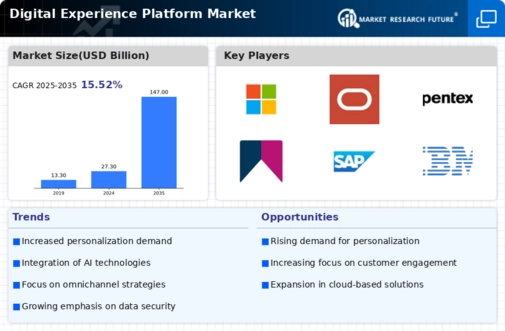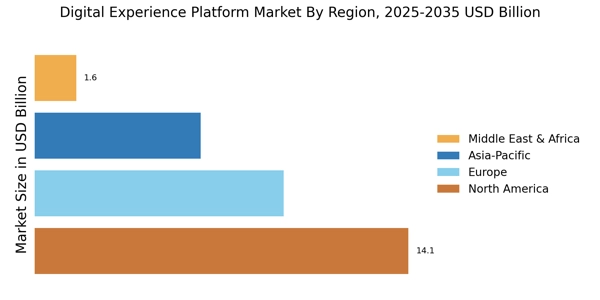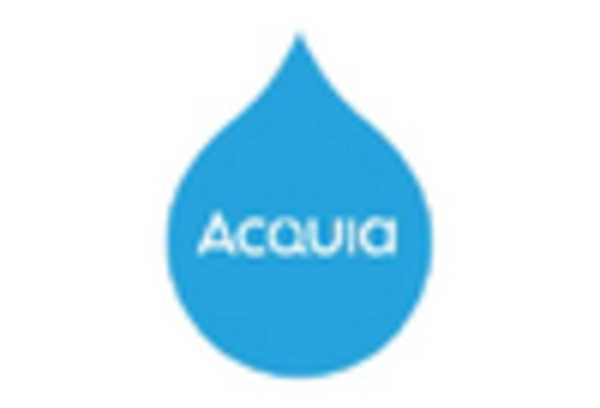The Digital Experience Platform Market is characterized by a dynamic competitive landscape, driven by the increasing demand for personalized customer experiences and the integration of advanced technologies. Major players such as Adobe (US), Salesforce (US), and SAP (DE) are at the forefront, each adopting distinct strategies to enhance their market positioning. Adobe (US) focuses on innovation through its Adobe Experience Cloud, which integrates AI capabilities to optimize customer engagement. Salesforce (US) emphasizes its Customer 360 platform, which aims to provide a unified view of customer interactions across various touchpoints. Meanwhile, SAP (DE) is leveraging its extensive enterprise resource planning (ERP) capabilities to enhance its digital experience offerings, thereby appealing to large enterprises seeking comprehensive solutions. Collectively, these strategies contribute to a competitive environment that is increasingly centered around technological advancement and customer-centricity.
In terms of business tactics, companies are increasingly localizing their operations and optimizing supply chains to better serve diverse markets. The Digital Experience Platform Market appears moderately fragmented, with a mix of established players and emerging startups. This fragmentation allows for a variety of approaches to customer engagement, although the influence of key players remains substantial. The collective actions of these companies shape market dynamics, as they strive to differentiate themselves through unique value propositions and innovative solutions.
In August 2025, Adobe (US) announced the launch of its new AI-driven analytics tool, designed to provide deeper insights into customer behavior. This strategic move is significant as it enhances Adobe's ability to offer personalized experiences, thereby solidifying its position as a leader in the digital experience space. The integration of AI into analytics not only improves customer engagement but also allows businesses to make data-driven decisions more effectively.
In September 2025, Salesforce (US) unveiled a partnership with a leading cloud infrastructure provider to enhance its Customer 360 platform's scalability. This collaboration is crucial as it enables Salesforce to better accommodate the growing demand for cloud-based solutions, positioning the company to capture a larger share of the market. The partnership reflects a broader trend of companies seeking to leverage external expertise to bolster their technological capabilities.
In July 2025, SAP (DE) expanded its digital experience offerings by acquiring a niche player specializing in customer journey mapping. This acquisition is indicative of SAP's commitment to enhancing its product suite and providing comprehensive solutions that address the complexities of customer interactions. By integrating specialized capabilities, SAP aims to strengthen its competitive edge in the market.
As of October 2025, current trends in the Digital Experience Platform Market include a pronounced focus on digitalization, sustainability, and the integration of artificial intelligence. Strategic alliances are increasingly shaping the competitive landscape, as companies recognize the value of collaboration in driving innovation. Looking ahead, competitive differentiation is likely to evolve, with a shift from price-based competition to a greater emphasis on technological innovation, customer experience, and supply chain reliability. This transition suggests that companies that prioritize these areas will be better positioned to thrive in an increasingly competitive environment.


















Leave a Comment